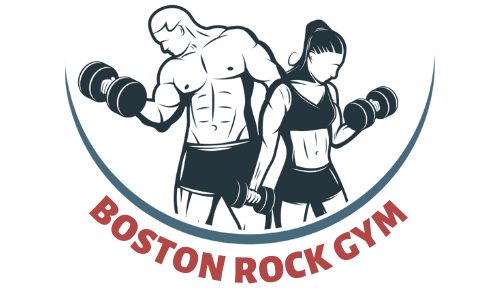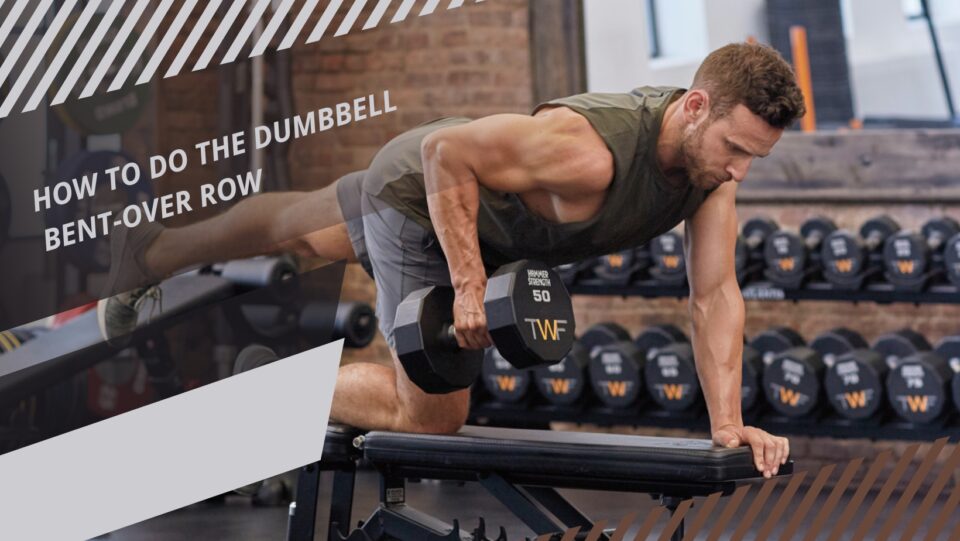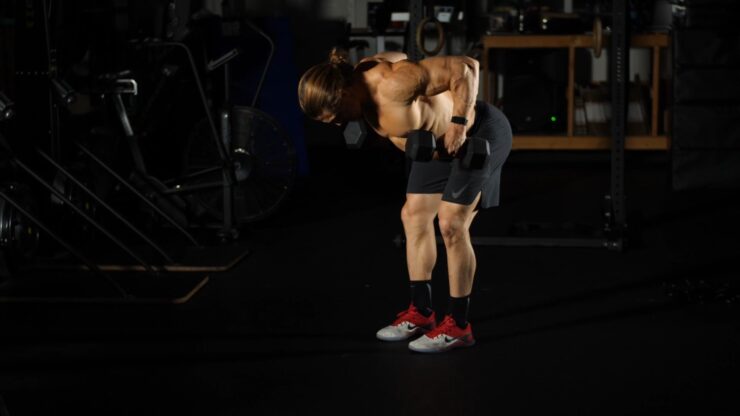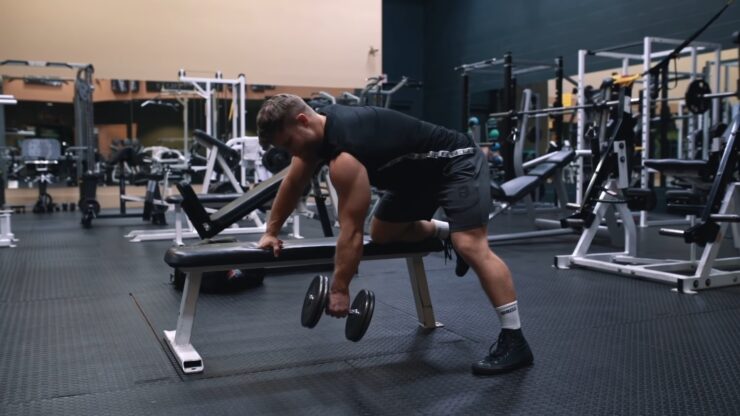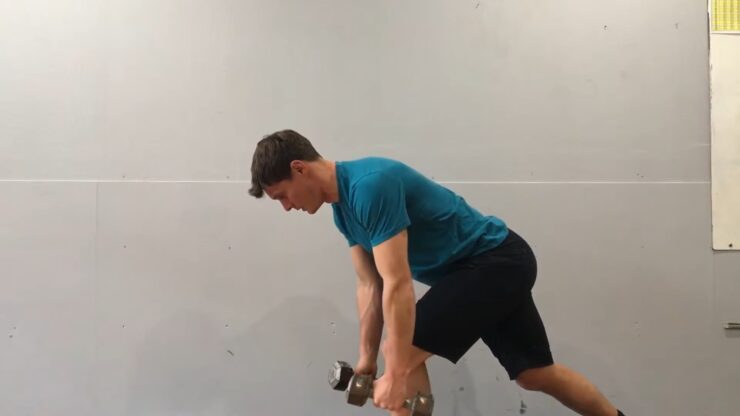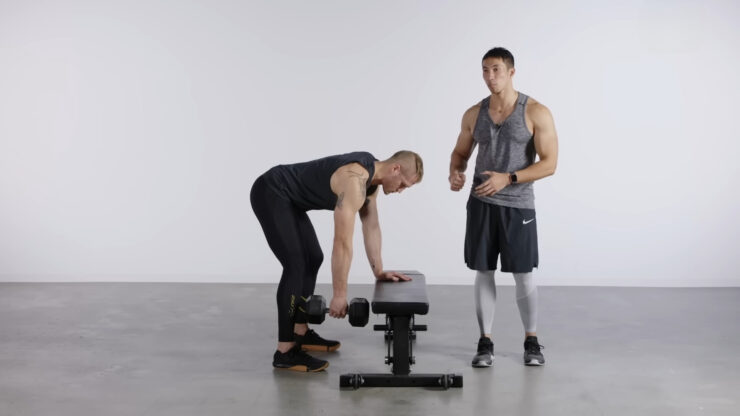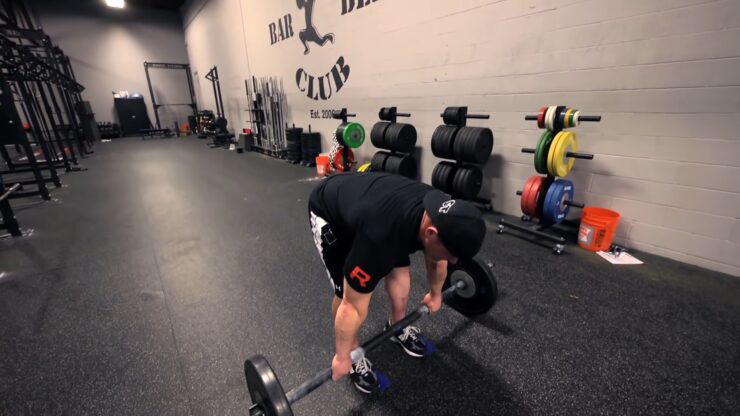The dumbbell bent-over row is one of the best exercises you can do when hitting the gym. It comes with a number of benefits that your body will thank you for! If you’re not sure how to go about performing this exercise, don’t fret!
We got you covered. You can learn all about it by reading our complete guide on how to do the dumbbell bent-over row instantly! Let’s jump right into it.
Contents
The Dumbbell Bent-Over Row—Explained
This exercise is considered a compound free-weight workout. This indicates that it uses several muscles simultaneously. A complex workout like this one can increase your body’s calorie burn and help you gain lean muscle mass since it engages numerous muscles and joints at once.
Complex exercises also include your core muscles in stabilizing motions, which helps support abdominal muscles that are stronger. Essentially, an exercise like the bent-over row will give you a number of benefits you should take advantage of.
As you raise for the bent-over row exercise, the majority of the burden will be supported by your upper and midback muscles. You will exercise the muscles that regulate your shoulder mobility that run from the base of your neck up your spine, such as the rhomboids and trapezius. Other back muscles like the latissimus dorsi, arm and chest muscles like the biceps and pectoralis, as well as shoulder and trunk muscles like the deltoids, will also be worked during this exercise.
How To Do the Dumbbell Bent-Over Row in 5 Steps
Firstly, remember to always keep your form in mind. The finest outcomes are possible when you learn how to perform dumbbell bent-over rows with good technique. For the most basic variation of the dumbbell bent-over row, follow these guidelines:
- Step out into the world with your feet shoulder-width apart. Take a dumbbell in each hand, using an overhand, neutral grip
- Your torso should be almost parallel to the ground before you forward-bend at the hips. Your arms will hang down with your palms facing in when you are hunched over or in the hinge posture
- Lift your elbows up until they are parallel to your back and toward your torso to start the workout. During the motion, pull your shoulder blades back
- The weights should be brought up to your chest. Hold the posture until your elbows are parallel to your body, then slowly return the weights to their original position
- Repeat for 8 to 10 times
With a few little adjustments, you may direct this entire-body exercise toward various back regions. For further improvements in your upper back muscles, for instance, lift the weights higher and closer to your chest. You can also raise toward your waist for a more intense lower mid-back exercise.
The bent-over row may also be made more challenging by employing an underhand grip instead of an overhand one. With your wrists pointing front, hold the dumbbells horizontally so that they are parallel to your shoulders. Your biceps and lats will receive a little additional attention as a result.
Key Benefits of the Dumbbell Bent-Over Row
The trapezius, rhomboids, and latissimus dorsi are only a few muscles among the upper and middle back muscles that are worked during the two-arm bent-over dumbbell row. Together with the shoulder rotators, other muscles are exercised, including the pectoralis major (chest) and brachialis (upper arm). One significant advantage of bent-over rows is that they might increase your spine’s stability.
You could burn more calories when you include this movement in your workout plan since using dumbbells makes it a moderate-intensity activity. The bent-over dumbbell row is a complex, functional workout that replicates an action that is used often in daily life, including when lifting larger objects. You may avoid tension by correctly positioning your back and bracing your abs.
The bent-over dumbbell row uses a similar movement pattern to those you perform every day. Many muscles and practically all of your joints, including your shoulders, elbows, hips, knees, and ankles, must be used to complete the exercise. As a result, it increases functional strength. The majority of the exercises you undertake demand core stability.
The bent-over dumbbell row is a terrific workout for exercising your complete core, front and back, as you stabilize your core throughout the activity. It is a complex exercise that engages numerous core muscles. The most crucial form for this exercise is a tight, clenched core. Preventing harm to the lower back is one of the core’s key responsibilities in this workout.
Other Dumbbell Bent-Over Row Variations To Try
1. Bent-Over Dumbbell Row in Lunge Position
In addition to working your back, you can also target your glutes and hamstrings by performing this exercise while in a lunge position. Also, some individuals find it simpler to balance in this posture. For the bent-over dumbbell rows, stand with one leg back and the other front.
2. Single-Arm Bent-Over Dumbbell Row
Lift the weights one at a time as opposed to both at once. Bilateral motions are less effective than unilateral movements in boosting power output because they employ both sides of the body simultaneously (those that use both sides of the body simultaneously).
Single-arm rows can be performed by alternately using the right and left arm or by performing all of your reps on the right side, then all of your reps on the left.
3. Barbell Bent-Over Row
The bent-over row can also be performed using a barbell. If you decide to try this variant, grip the barbell with your hands facing in and bend your hips to a 45-degree angle before bracing your core and lifting the weight.
Conclusion
With the dumbbell bent-over row exercise, you want to focus on perfect form to get the best results. Making sure you always have the perfect form when performing this exercise is essential to avoid injuries and reap all the benefits.
Follow the steps we provided in this article to begin taking advantage of all the wonderful potential advantages that might result from this effective and reliable workout, but be sure to get your doctor’s approval first to avoid any risks and mishaps!
